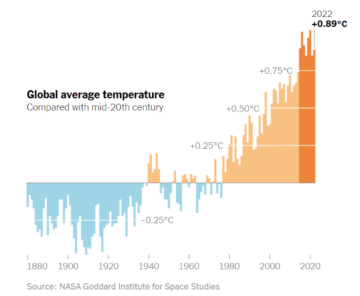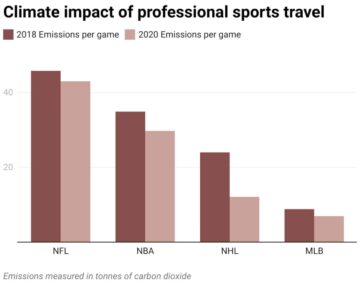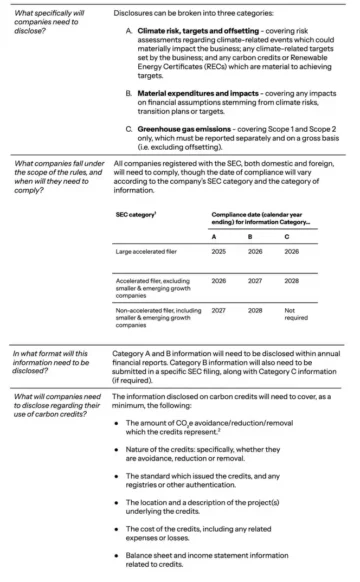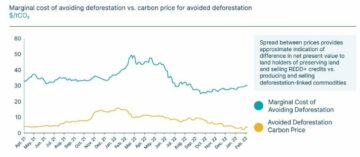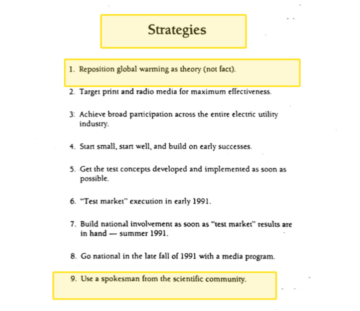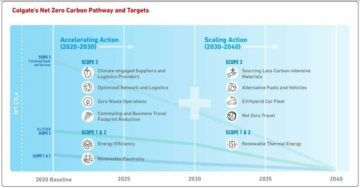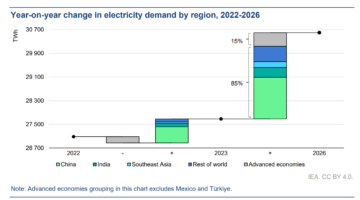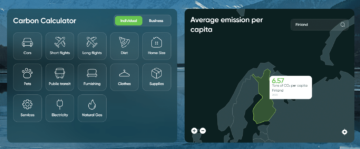Carbon credit rating firms seek to help companies have a better sense of carbon offset credits, from which many have turned their backs on due to the reputational risk of greenwashing.
The notion of greenwashing refers to projects that don’t follow standards and have inaccurate measurements. It weakens the confidence of carbon credit buyers, especially businesses wanting to decarbonize their operations.
Rating Carbon Credit Projects
Corporations, online carbon marketplaces, and traders are the common clients of carbon credit ratings. But recently, intermediaries that sell carbon credits also now have the scores along with them.
- Each carbon credit represents one metric ton of carbon dioxide avoided or removed from the atmosphere.
Carbon credit rating agencies grade projects by considering social and economic data, academic research, and satellite imagery. They flag risks using various criteria. For instance, if a project issues too many credits or it’s financially reliant on income from carbon credits.
The rating firms have been flagging projects like anti-deforestation for issuing more credits than they should be. In fact, they already provided early warnings way before the media claims that projects don’t deliver the carbon reductions they promise.
For example, one of the carbon credit rating agencies, Sylvera, reported that below a third of REDD+ projects (preventing deforestation) are high quality. The rater’s CEO Allister Furey noted:
“There is a historic problem with carbon markets lacking transparency and a big spread in quality has undermined [their] legitimacy.”
How grading or scoring is done
The market for voluntary carbon credits (VCM) reached $2 billion in 2022, according to Ecosystem Marketplace. Different estimates say it will hit $50 billion by 2030.
The carbon credit ratings industry primarily earns through subscriptions. The 4 most well-known companies in the sector are Sylvera, BeZero Carbon, Calyx Global, and Renoster Systems.
The recent carbon credit marketplace launched by Salesforce includes ratings from Sylvera and Calyx. The tech giant has also added BeZero to its rating partners.
Nina Schoen, head of product for Salesforce’s Net-Zero Marketplace said:
“A third-party rating for us is almost like education for buyers. It’s one piece of critical information alongside all sorts of critical information that buyers need.”
Each carbon credit rating firm has its own unique system.
Sylvera scored projects using an 8-point scale with AAA as highest to D as lowest. BeZero uses a 7-point letter scale from a high of AAA+ to a low of A.
Calyx Global opted to use a 5-point scale from A to E while Renoster rates projects in two stages and assigns a numeric score beginning at zero. The numbering represents how many tons of CO2 or equivalent emissions each credit abates.
Rating agencies say that not every credit represents an actual ton of carbon avoidance or removal. Not all credits are made equal; some don’t deliver on their claims while others could be doing more than what they promise.
Apart from the scores that carbon credit rating firms have, there are other grades that companies and investors use in measuring sustainability such as ESG scores and green bond assessment of a project.
Discrepancies in Ratings
Scores from raters often vary. In fact, 26 out of 40 projects reviewed by the Wall Street Journal agree in broad terms but significant differences exist in rating large forestry projects.
For example, a forestry project in Brazil got the lowest score from BeZero and Calyx but Sylvera gave it a better grade.
In BeZero’s assessment, the project won’t likely need funding support from carbon credits as it is exporting lucrative wood products like mahogany. The rating agency also noted that Brazilian laws would protect the trees from getting harvested.
Meanwhile, Calyx has three significant risk factors for the project. Potential over-crediting is one of them.
Agrocortex, the project developer, said revenue from carbon credits accounts for about 60% of its income in 2021 and 2022. The developer said it will earn a gross profit of $17 million at the most during a three-decade period of producing timber sustainably while also allowing it to sell carbon credits.
The developer also said that despite selling high-value timber, the return on investments is very low as it competes with illegal loggers that offer products at lower prices.
More remarkably, carbon credits prompt the company not to harvest economically viable wood. This keeps deforestation rates in line with Sylvera’s expectations.
Among the carbon credit rating agencies, BeZero rates more conservatively than others. 20% of projects got the highest rating from Sylvera, 10% of them were reviewed by Calyx, and 8% earned the top ratings from BeZero.
For instance, 40 projects rated by Sylvera and BeZero compared on a standardized scale showed the following differences on 5-point rating scales.
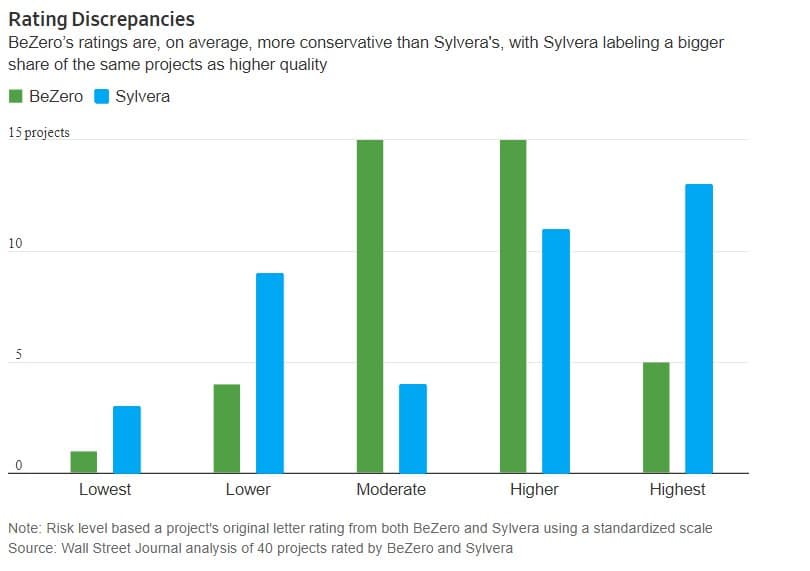

Overall, there are thousands of projects in place that generate carbon credits. But only a fraction of them has been scored and rated, including the largest projects by credit volume. BeZero rated the most projects (280), followed by Calyx (260), Sylvera (115), and Renoster (9).
BeZero and Calyx cover a broader range of projects, from capturing methane leaks from landfills to energy-efficient cookstoves. Sylvera and Renoster focus on rating nature-based projects.
- SEO Powered Content & PR Distribution. Get Amplified Today.
- Platoblockchain. Web3 Metaverse Intelligence. Knowledge Amplified. Access Here.
- Source: https://carboncredits.com/carbon-credit-rating-firms-seek-to-boost-buyers-confidence/
- 1
- 2021
- 2022
- 9
- a
- AAA
- About
- academic
- academic research
- According
- Accounts
- added
- agencies
- agency
- All
- Allowing
- alongside
- already
- and
- assessment
- Atmosphere
- avoided
- before
- Beginning
- below
- Better
- Big
- Billion
- bond
- boost
- Brazil
- Brazilian
- broad
- broader
- businesses
- buyers
- Capturing
- carbon
- carbon credits
- carbon dioxide
- ceo
- claims
- clients
- co2
- Common
- Companies
- company
- compared
- competes
- confidence
- considering
- could
- cover
- credit
- credit rating
- Credits
- criteria
- critical
- data
- deforestation
- deliver
- Despite
- despite selling
- Developer
- differences
- different
- doing
- Dont
- during
- each
- Early
- earn
- earned
- Economic
- ecosystem
- Education
- Emissions
- Equivalent
- especially
- estimates
- Every
- example
- expectations
- factors
- financially
- firms
- Focus
- follow
- followed
- following
- fraction
- from
- funding
- generate
- getting
- giant
- Global
- grade
- Green
- gross
- harvest
- head
- help
- High
- highest
- historic
- Hit
- How
- HTTPS
- Illegal
- in
- inaccurate
- includes
- Including
- Income
- industry
- information
- instance
- intermediaries
- Investments
- Investors
- issues
- issuing
- IT
- journal
- large
- largest
- launched
- Laws
- Leaks
- legitimacy
- letter
- likely
- Line
- Low
- lucrative
- made
- many
- Market
- marketplace
- marketplaces
- Markets
- max-width
- measurements
- measuring
- Media
- methane
- metric
- more
- most
- Need
- net-zero
- noted
- Notion
- offer
- offset
- ONE
- online
- Operations
- Other
- Others
- own
- partners
- period
- piece
- Place
- plato
- Plato Data Intelligence
- PlatoData
- potential
- preventing
- Prices
- primarily
- Problem
- Product
- Products
- Profit
- project
- projects
- promise
- protect
- provided
- quality
- range
- Rates
- rating
- Rating agencies
- ratings
- reached
- recent
- recently
- refers
- removal
- Removed
- Reported
- represents
- research
- return
- revenue
- reviewed
- Risk
- risk factors
- risks
- Said
- satellite
- satellite imagery
- Scale
- scales
- scoring
- sector
- Seek
- sell
- Selling
- sense
- should
- significant
- Social
- some
- spread
- stages
- standards
- street
- subscriptions
- such
- support
- Sustainability
- system
- Systems
- tech
- terms
- The
- The Wall Street Journal
- their
- Third
- third-party
- thousands
- three
- Through
- to
- Ton
- tons
- too
- top
- Traders
- Transparency
- Trees
- Turned
- unique
- us
- use
- various
- viable
- volume
- W3
- Wall Street
- Wall Street Journal
- wanting
- webp
- well-known
- What
- which
- while
- Wikipedia
- will
- would
- zephyrnet
- zero


